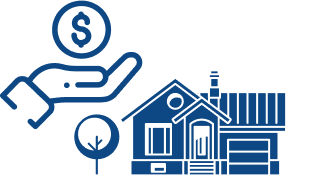Impact of Rising Mortgage Rates on Homebuyers and the Housing Market
The rate for a 30-year fixed mortgage just came close to 5% after jumping twice in seven days. As of March 30, the most common loan stays at 4.88% according to Mortgage News Daily, but a few days ago the number went up to 4.95%.
Mortgage rates fluctuate following yields, but only loosely, and the yield on a 10-year Treasury went up 1 point to 1.45%, after being held close to zero since the start of the Coronavirus pandemic. Mortgage rates are also influenced by the demand for mortgage-backed bonds, which have been scaled down by the Federal Reserve. All of this made the 30-years fixed climb more than 150 points in just a year.
This incline of the rate did not significantly soften the demand in the housing market, as the rate, although higher, is still lower than it was before the pandemic. Not only did the rate climb, but the median price rose to $384,000, which affected the median monthly mortgage payment.
Borrowers will be paying around 20% more each month than those who signed on a year ago. Refinancing numbers took the biggest hit and went down 14%, due to the sudden spike in mortgage rates. But there are still borrowers who can benefit from refinancing now, before the rate goes above 5%, probably even higher. The uncertainty and high prices should dampen the demand in the future.
Right now, the demand is not decreasing, and the US is entering springtime - which in the real estate world marks the peak homebuying season. With high rates and home prices, many potential buyers will have to settle for less or get priced out. The ever-increasing rate is creating a sense of urgency to adjust the goals and lock in the loan as soon as possible.
The demand in the housing market is not abating, but lenders are seeing a decrease in mortgage applications. According to last week’s reports, the number of overall mortgage applications fell 2% compared to the week before, and 12% year over year. The biggest drop is noticeable in FDA and VA applications.
These two types of loans are a part of the government program, but the Fed announced that they will be purchasing fewer mortgage-backed securities (MBS) and this is directly affecting the lower and middle classes. Many first-time homebuyers are depending on FHA loans for their house purchase, and they have been the first to feel signs of a crisis. There are only around 860,000 houses for sale in America, and many of them are going to be cash-bought by investors, who often buy to rent.
Investors pricing out regular homebuyers is creating a chain reaction, so not only are the prices of houses rising to unaffordable levels, but the rental market is fueled. Rent prices are skyrocketing, and lower-earning families are under pressure. All of this is coming at the time of the biggest inflation in the last 40 years and a global peace crisis. It seems like the regular, lower-earning homebuyer will feel the most consequences in the near future.
SELL
YOUR HOUSE
If you want to sell fast and are worried about how long the traditional process takes, and the commission and fees involved, consider working with SleeveUp Homes.





 view all blogs by this author
view all blogs by this author Zachariah Peterson (69 blogs)
Zachariah Peterson (69 blogs)